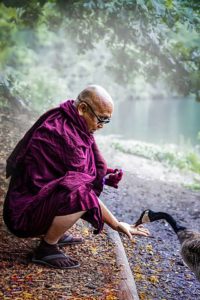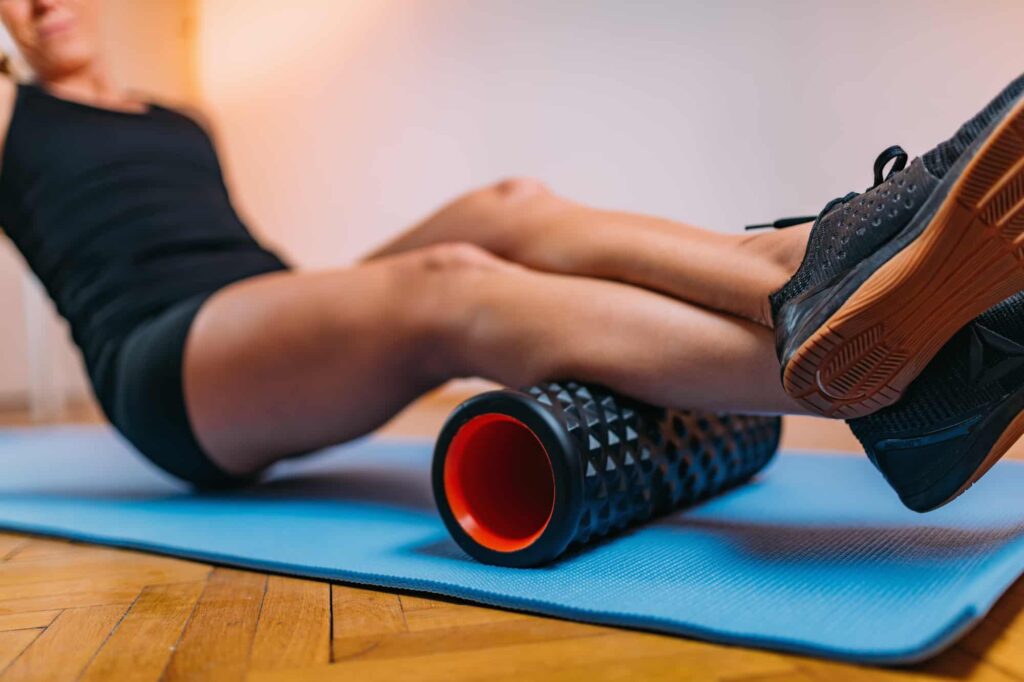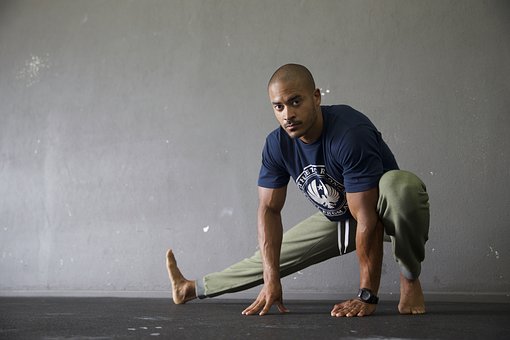There is likely no other physical activity that requires greater hip engagement, range of motion and activation than martial arts.
And in this post you will learn exactly how to improve hip mobility for martial arts.
Hip mobility and flexibility is now more focused on in overall strength and conditioning. This is especially for sports like Olympic lifting and programs such as Cross Fit.
Muay thai and other martial arts require hip mobility and range of motion in a variety of unfamiliar and unstable positions.
This includes standing on one leg to throw kicks in a variety of ways such as the Question Mark Kick or Brazilian Kick which requires good hip rotation and mobility.
Also hip mobility is very important for grappling whether executing or defending against takedowns or playing the guard defensively, offensively or passing the guard.
“Improve your Hip mobility” is probably the #1 tip I would give to any martial artist just starting out and looking to improve quickly.
And this really is an important aspect of improving your muay thai and martial arts that many people do not consider working on early in their training.
3 Most Important Methods for Mobility
Most people who begin muay thai or any other martial art for that matter, think that a lot of static stretching will help them loosen up their hips and improve their kicking power and technique.
However stretching is only one aspect of 3 important methods that you can use to really improve your mobility and range of motion on your own.
What is sometimes referred to as the ‘Holy Trinity’ of Mobility is:
- Stretching – to restore range of motion in movement patters
- Soft Tissue Release – to treat tightness and restore length of soft tissue
- Joint Distraction – to improve function of the joint
In this post we will look at how to incorporate the other 2 methods of the Mobility Trinity which will get you well on your way to improving mobility of your hips.
Incorporating these methods into your overall mobility routine can help with your whole body movement patterns and other joins such as the ankle and shoulders.
But first let’s discuss how your hips end up getting so tight in the first place.
2 Reasons Your Hips are Tight
1. Too much sitting
There are different factors which can contribute to tight hips but the most common one in today’s modern society is sitting in a chair, too much.
In today’s modern world most of us spend a lot of our time sitting in a chair. We sit in a chair on the way to work, whether that be in a car or bus or train.
We spend hours at work sitting as well.
And then when we come home what do many people do to relax?

Sit on a couch and watch TV.
Okay so many of us are able to make a commitment to physical exercise and training at a gym or dojo.
However, the benefits of this physical exercise can be severely reduced just by the amount of time we spend sitting in a chair.
Especially if we are spending 10 plus hours of sitting and trying to remedy that through a few hours a week of physical movement and stretching.
2. Moving through only partial range of motion
Often times we as humans, especially those of us with desk jobs, don’t make full use of the range of motion of our joints.
The hips are a perfect example and we often end up tight and restricted in the hip capsule due to a lot of sitting and not moving the hip through a full range of motion regularly.
In fact studies have shown that cultures that sit on the floor a lot when eating or who squat down to go to the toilet, often don’t have the same hip problems or require hip replacements compared to Western society’s where sitting in chairs a lot of the time is common.

So squatting all the way down i.e “ass to grass” is a motion rarely performed by most people in Western, or Western influenced societies.
In fact most of the time we only do half squats (sitting in chairs and on the toilet) without our hips ever going below our knees to a full squat.
This is a motion the human body was designed to do on a daily basis!
Whether it be squatting to relax and have something to eat and chat, or squatting to go to the toilet (common in Asia), our hips only ever go through half of their full ROM and this causes a lot of restriction.
How to address hip restriction to improve hip mobility for martial arts?
As we discussed a lot of people and even long term muay thai practitioners and teachers will say that you need to stretch a lot.
However, stretching alone wont address a major constriction in your hip capsule.
A leading authority in the area of flexibility, Micheal J. Alter, in his much referenced book, “Science of Flexibility”, attributes a lack of hip mobility and ‘resistance to movement’ to different factors apart from muscle and fascia issues.
In fact Alter attributes as much as 47% of movement restriction (hips included) to the joint capsule itself and 41% to muscle and fascia.

So when addressing our hop mobility issues static stretches alone is not the best way to improve mobility in the hips.
So if static stretching is not the best way to help improve our hip mobility and range of motion, then what are the other methods we can incorporate?
1. Joint Distraction Using Resistance Bands
The hip capsule itself, which can account for up to 47% of restriction of movement (i.e movement that limits your muay thai kicks and knees) needs to be addressed through more advanced methods such as using a band to stretch which effects upon the joint capsule as well as the muscle through stretching.
The use of the resistance band effects upon the hip capsule through separating the joint surfaces from one another and creating more ‘space’ in the capsule.
Overtime through tightening of the surrounding tissue of the hip and poor movement mechanics such as discussed earlier, the hip capsule itself becomes tight and compressed.
This restricts mobility and movement and the flow of synovial fluid that acts as the lubricant between the joint surfaces.
Using a resistance band to ‘distract’ the joint and separating the surfaces allows the synovial fluid to lubricate the joint surfaces as in a normal hip capsule.
2. Soft Tissue Therapy – Active Self-Myofascial Release (ASMR)
In addition to incorporating banded stretching to your routines you also need some Self Myofascial Release.
This is becoming more and more common these days and foam rolling is more and more a part of everyone’s mobility and flexibility routine.

However, Active SMR which involves a slight tweak to normal traditional SMR and can be more effective.
These techniques are something like the Active Release Techniques performed by chiropractors, physio’s and massage therapists.
Active SMR benefits more through adding shear force to break up adhesion’s and matted tissues which contribute to restrictions in your muscles as opposed to regular SMR or foam rolling.
Learn more about ASMR from S&C Coach Eric Wong here
Hip Mobility for Martial Arts – Final Thoughts
In this post I mainly want to point out to everyone that hip mobility is really important for muay thai and other martial arts as well.
Also, the standard response that many people give for improving flexibility for martial arts and kicking is that you need to stretch a lot.
I hope that thought this post you will now understand that a lot of static stretching may not be the best method to improving hip mobility.
It is through combining stretching with soft tissue work and addressing the joint capsule itself that you can achieve the best results.
Addressing the joint capsule restriction through understanding what causes restrictions such as too much sitting and not utilizing our full ROM in our joints is important.
Including in your routine more advanced methods such as banded stretches and ASMR techniques will go a long way to improving your hip mobility for muay thai and martial arts.
And save you time by efficiently addressing hip mobility.




